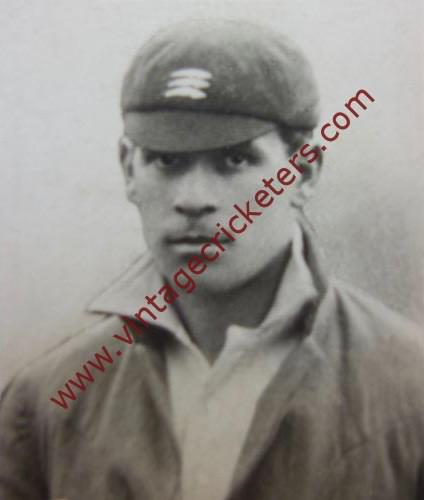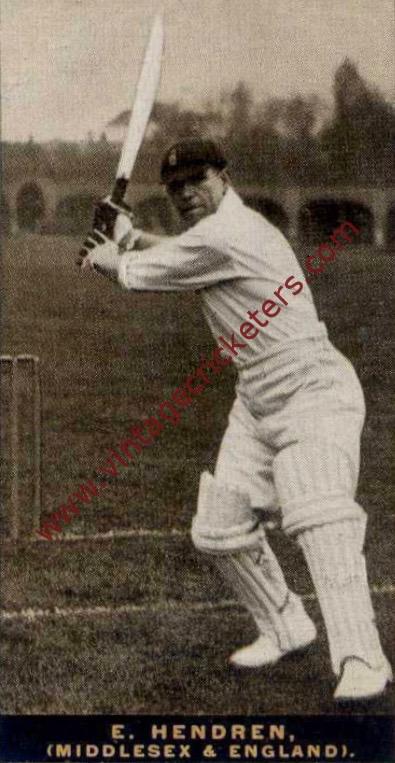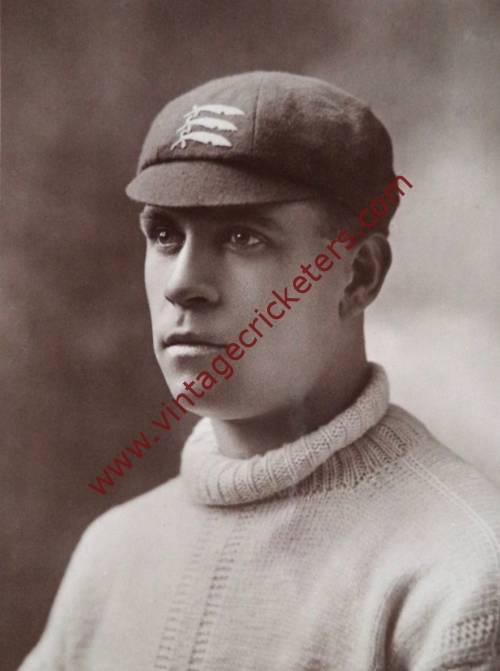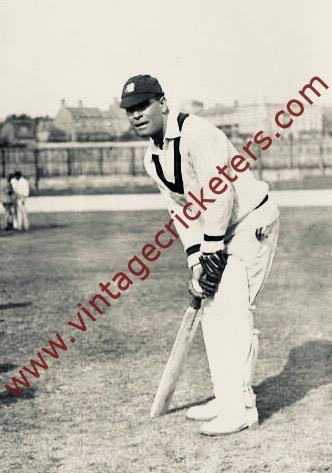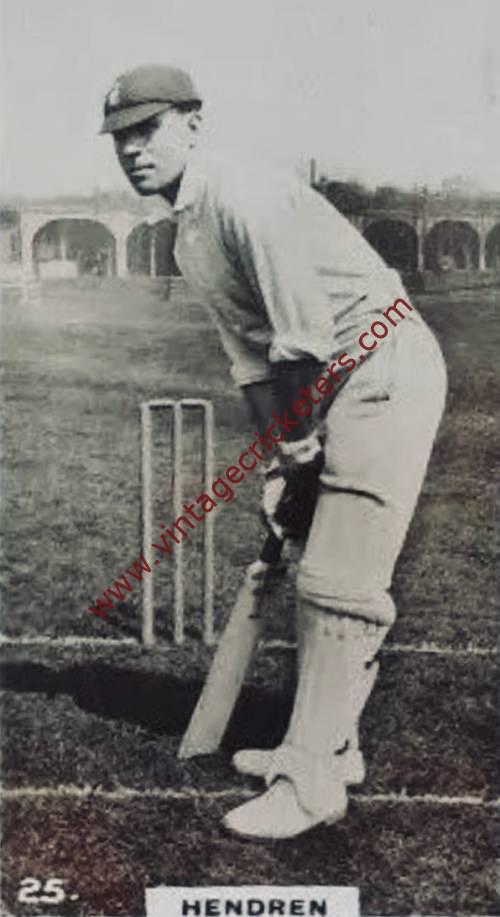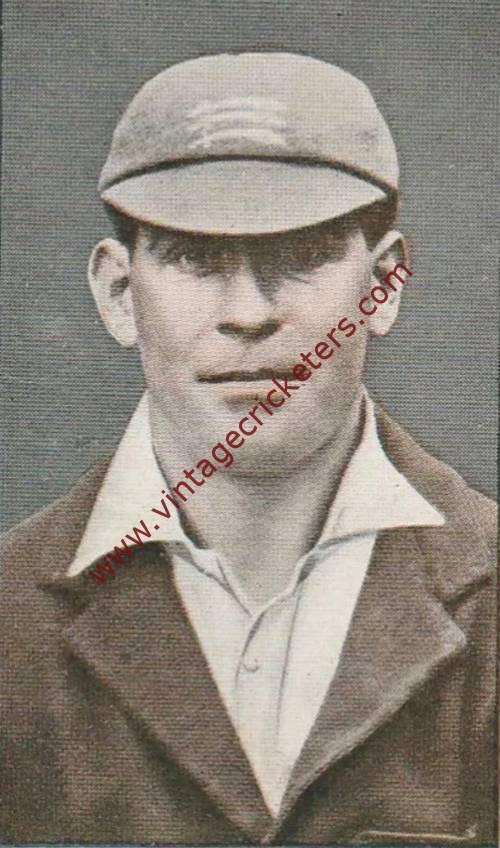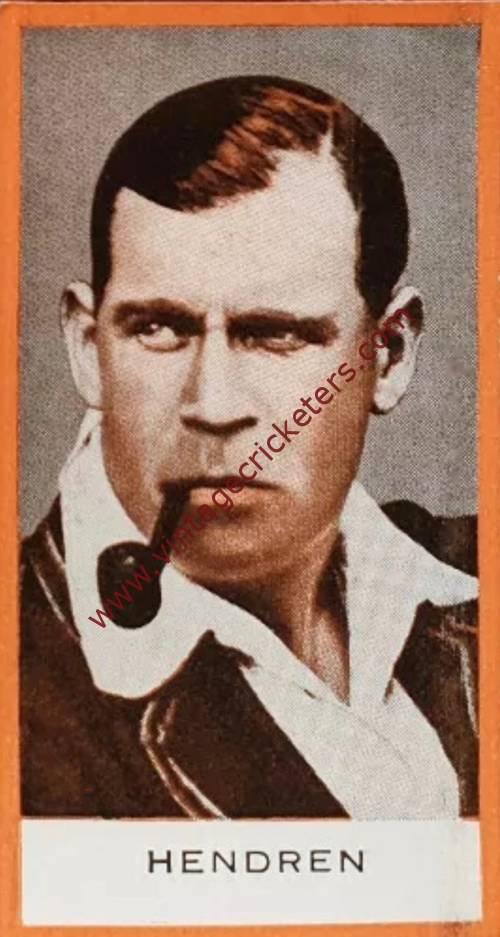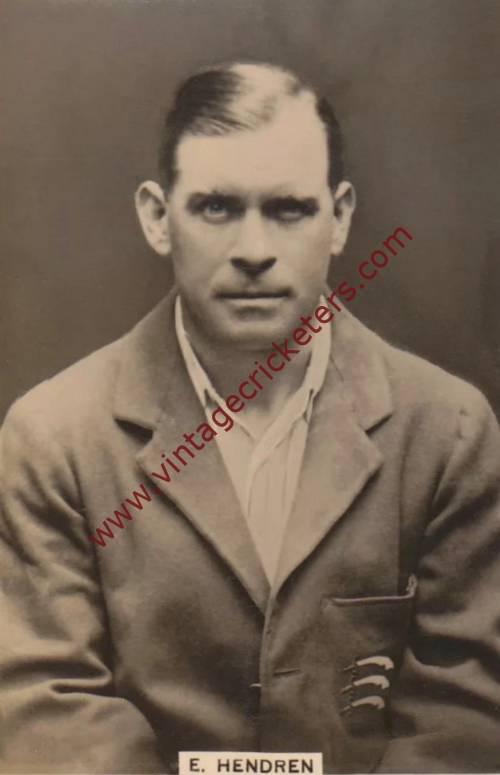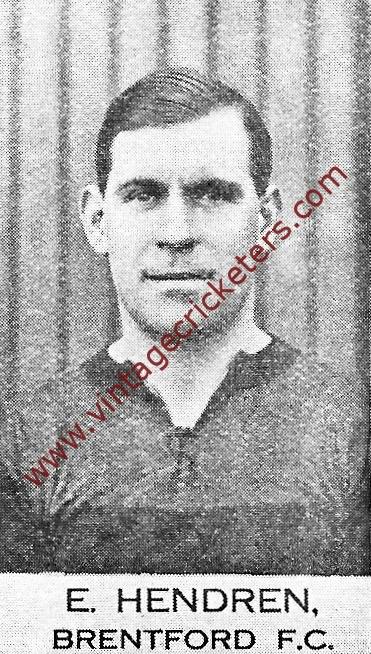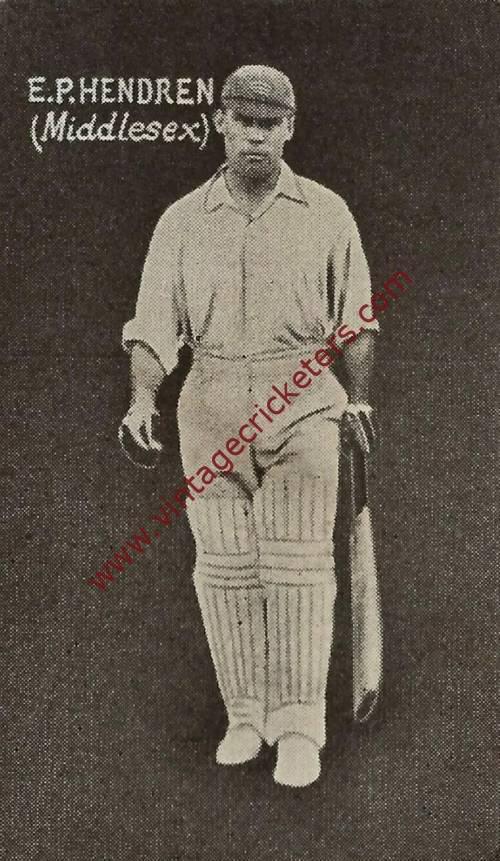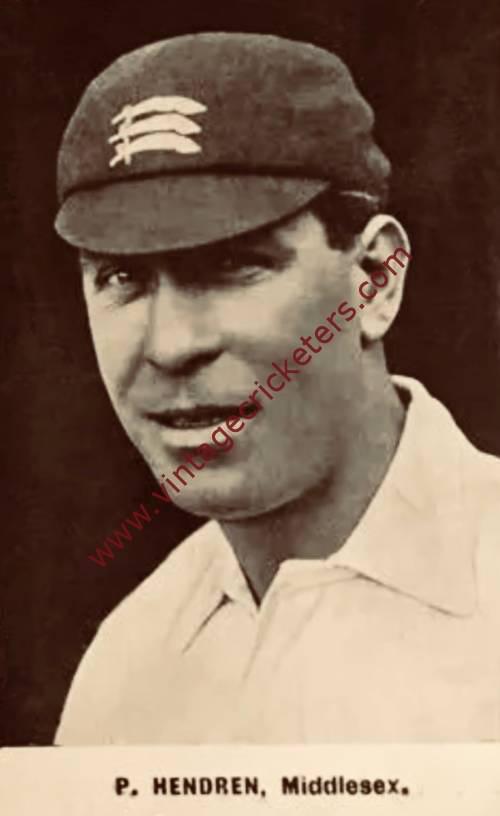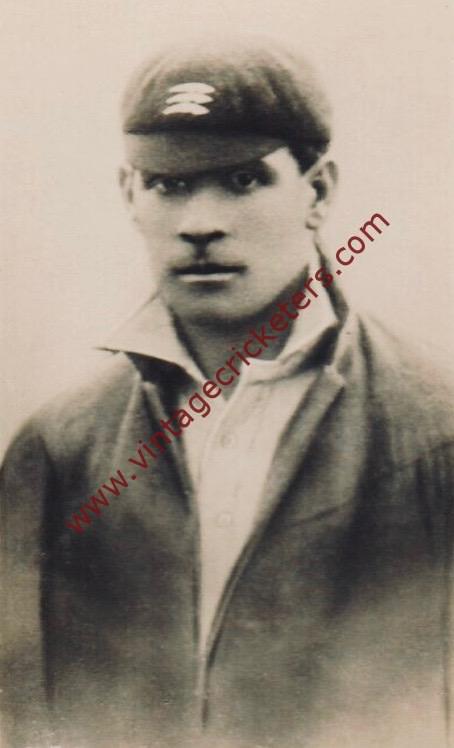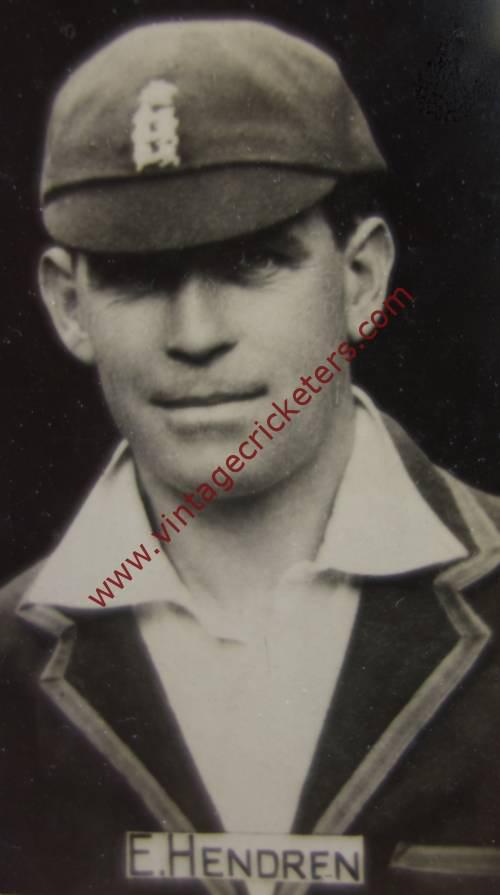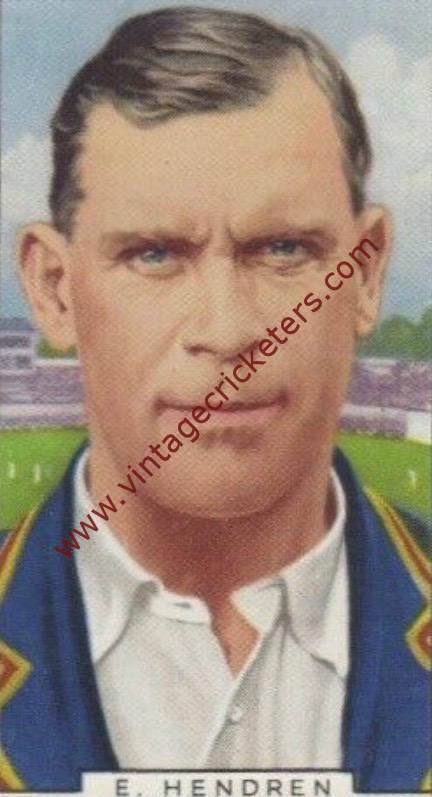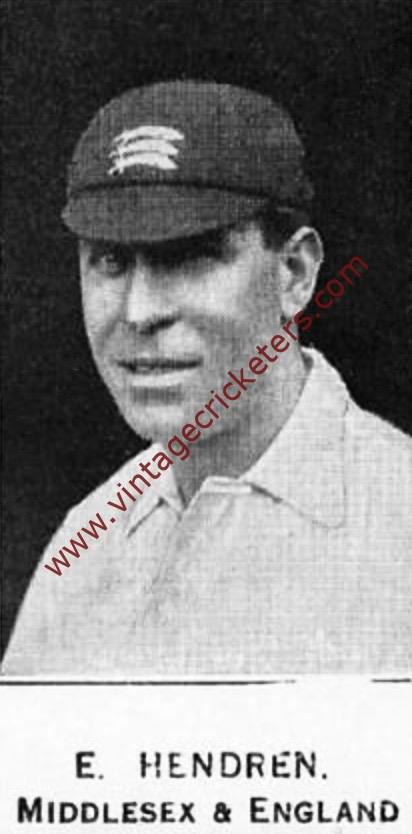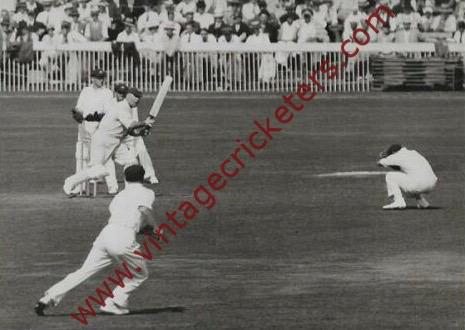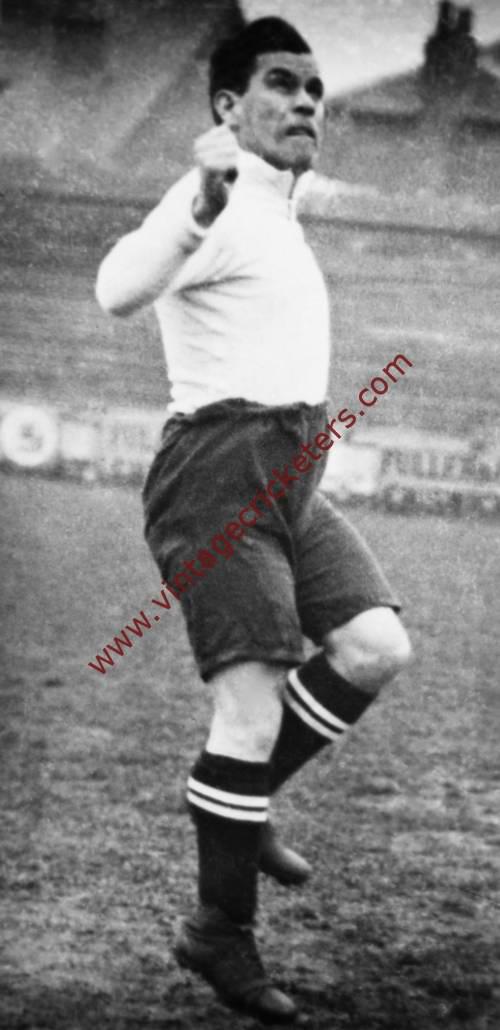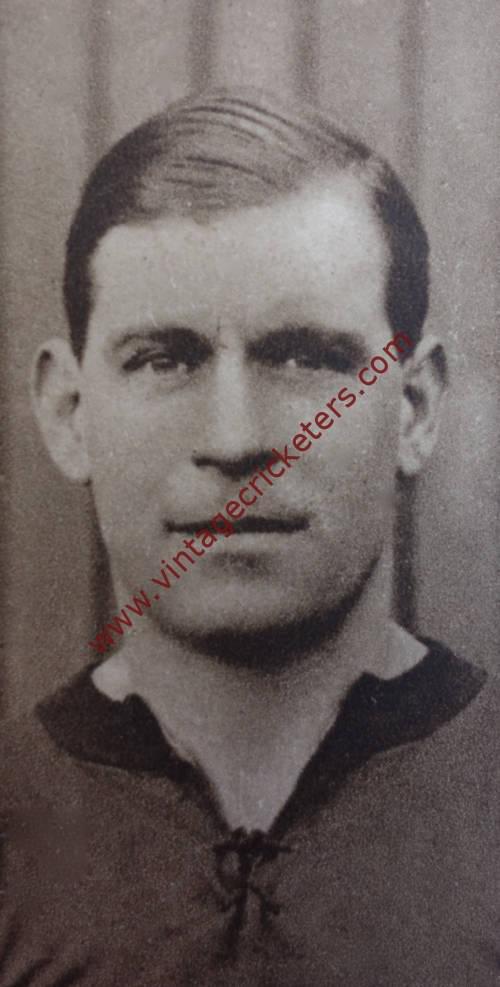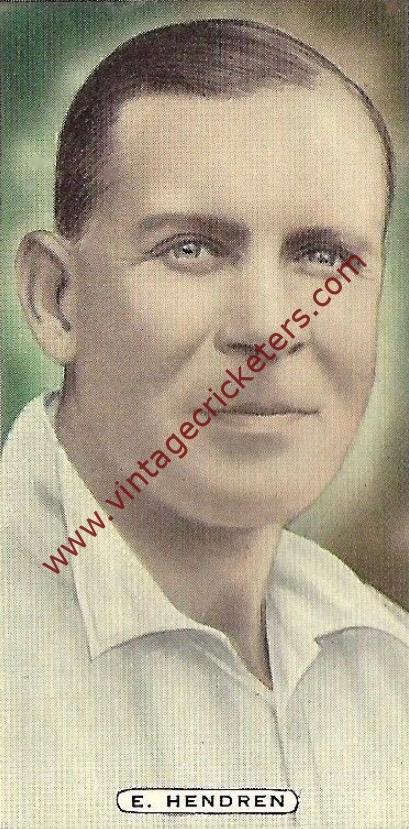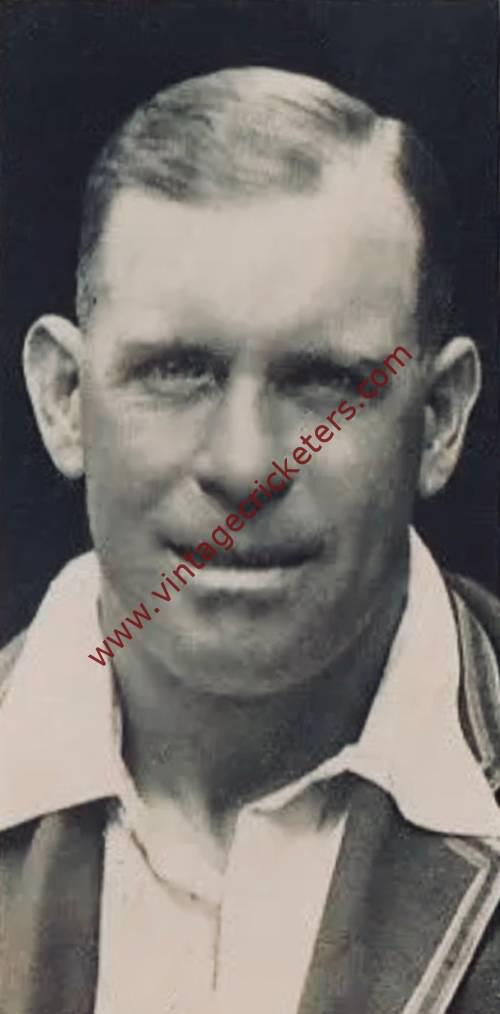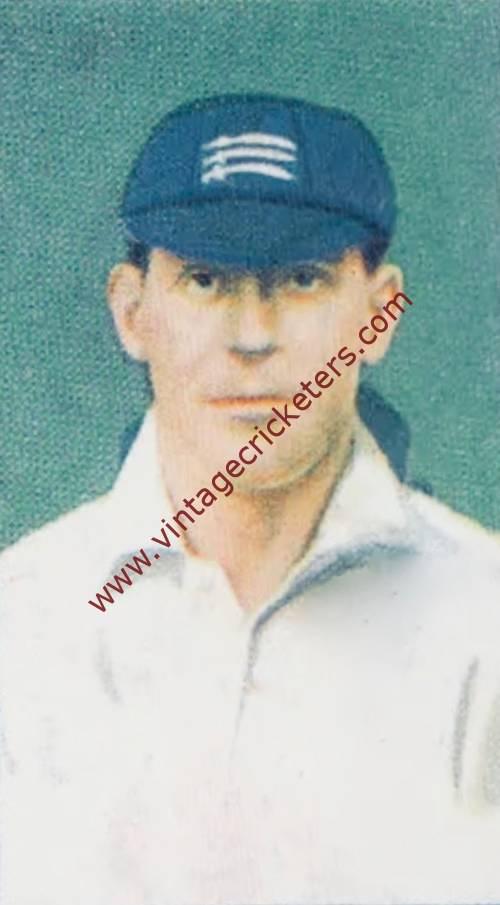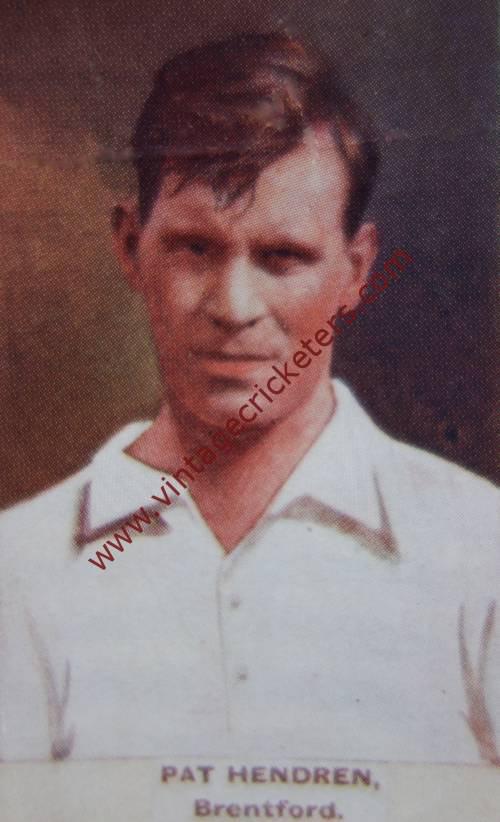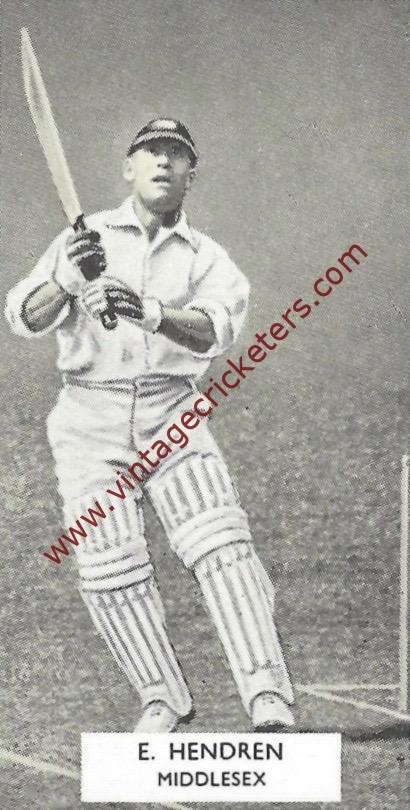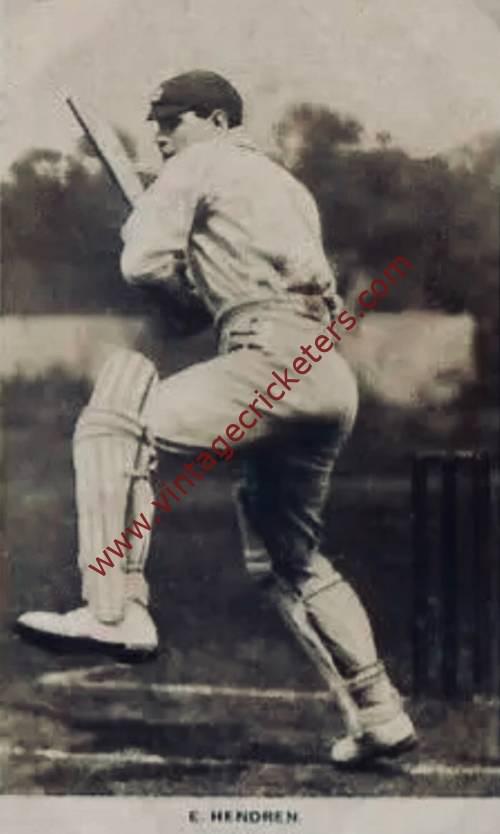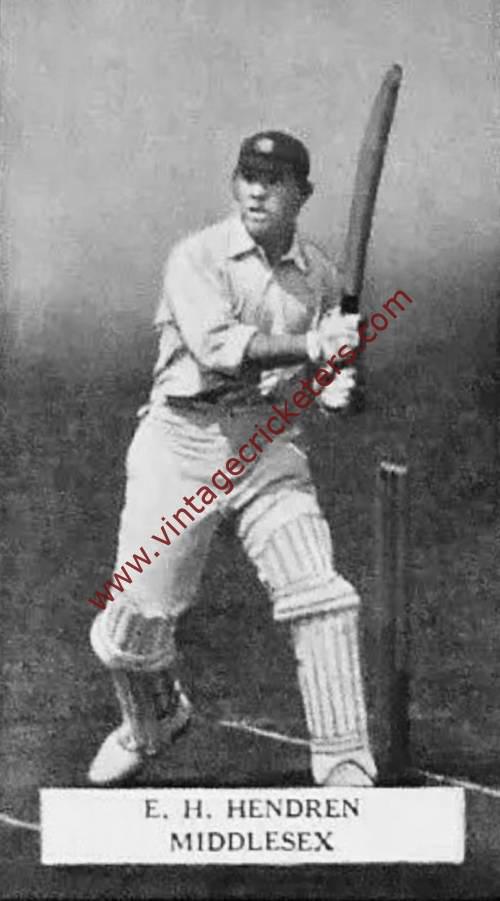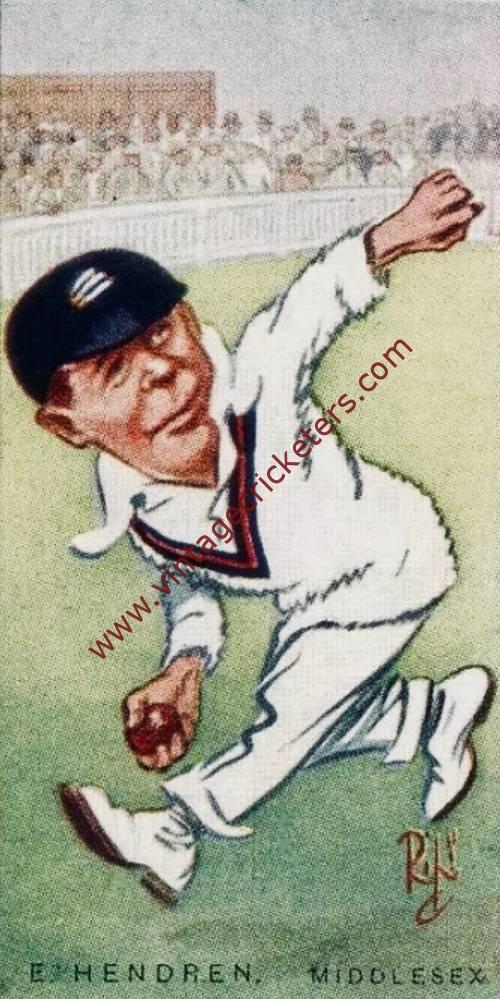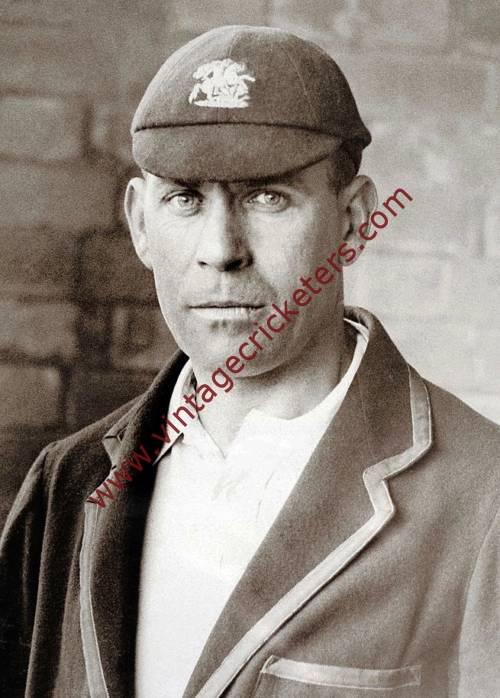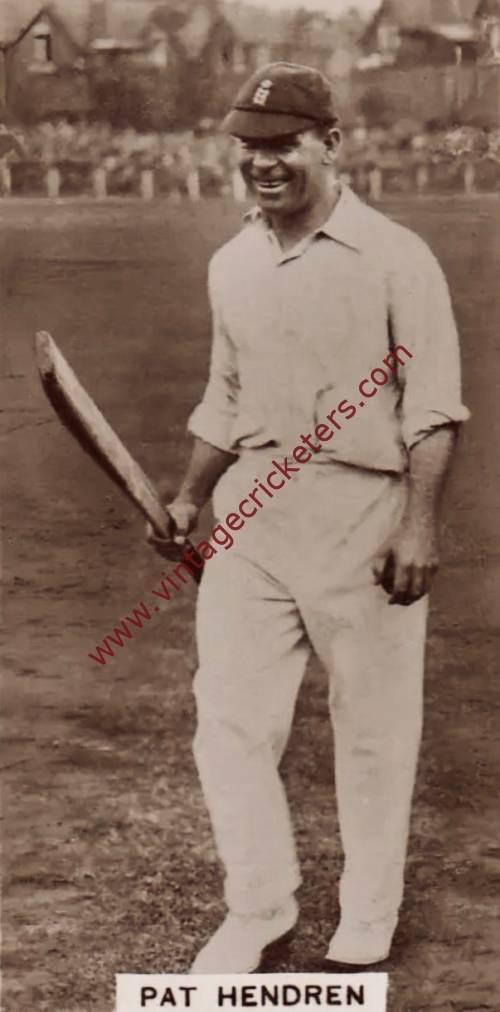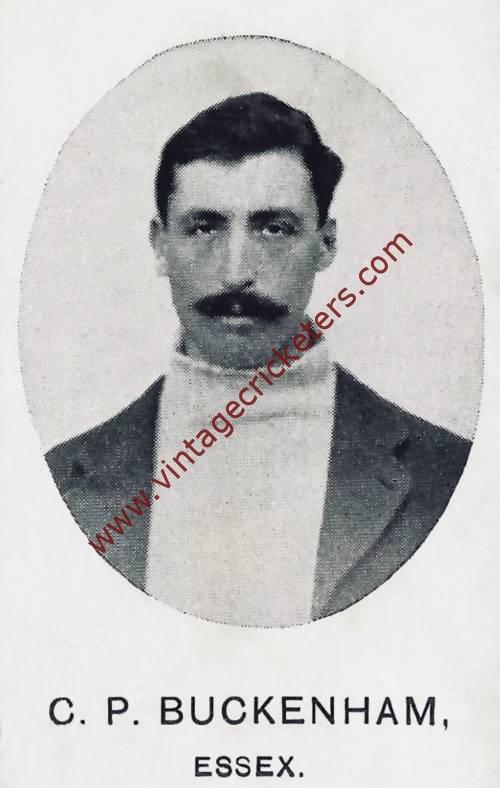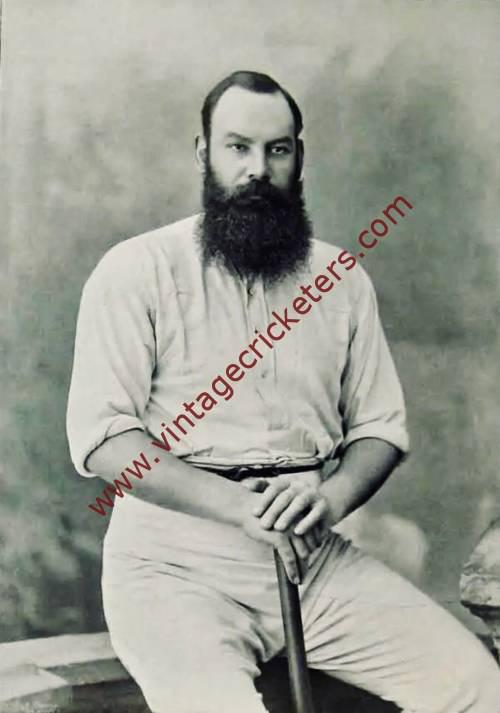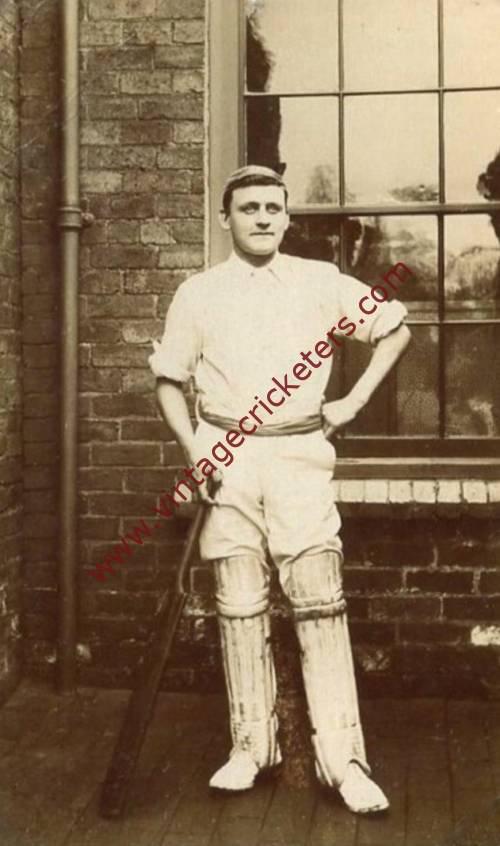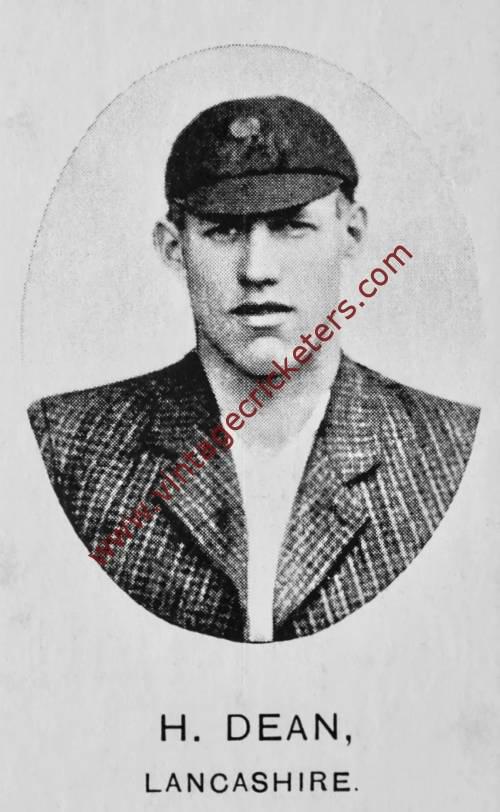Please choose your photo size from the drop down menu below.
If you wish your photo to be framed please select Yes.
Note: 16″x 20″not available in a frame.
Images can also be added to accessories. To order please follow these links
£8.95 – £49.95
Please choose your photo size from the drop down menu below.
If you wish your photo to be framed please select Yes.
Note: 16″x 20″not available in a frame.
Images can also be added to accessories. To order please follow these links
The maximum number of views of this element is reached.
Please contact the webmaster to enable unlimited views.
Turnham Green, London born Elias “Patsy” Hendren was one of the most prolific batsmen of the inter-war period, averaging 47.63 in his 51 Test matches, scoring 3,525 runs in Tests, and averaging 50.80 in all his first class matches. He has the third highest first class run aggregate of 57,611 runs (after Jack Hobbs and Frank Woolley), and his total of 170 centuries ranks second only to Hobbs. Not always orthodox in style, short and stockily built, he was a strong player of fast bowling, celebrated for the power with which he invested his driving, for his cutting and for his courage in hooking fast bowlers. On pitches helpful to bowlers he used his feet with consummate skill. On four occasions he put together a hundred in each innings of a match and he reached three figures for Middlesex against every other first class county. In three summers he exceeded 3,000 runs; in 12 he made more than 2,000, and in 10 over 1,000. His ability as a deep fieldsman is illustrated to some extent by the number of catches he brought off, 725, but the number of runs he saved cannot be gauged.
Hendren joined the Lord’s ground staff at the age of 16 in 1905, and made his first class debut for Middlesex in 1909, though the game was abandoned after the first day when spectators caused damage to the pitch and he did not get to bat. He played nine games the following year and gradually established himself in the team, but it was 1911 before he made his first hundred, and until the First World War forced the suspension of the County Championship he never managed to average 40 in a season. Hendren joined the 23rd (Service) Battalion of the Royal Fusiliers (1st Sportman’s Battalion) in December 1914 before being transferred to work at a munitions factory in Royal Leamington Spa. He rejoined the Royal Fusiliers towards the end of the War.
Returning to cricket in 1919 Hendren scored 1,655 runs and averaged over 60, as he was also to do the following year. He was made a Wisden Cricketer of the Year in 1920 and was picked for the 1920-21 Ashes tour, making his Test debut at Sydney that December and making 58 in the second innings despite Australia’s huge 377 run victory. He scored two further Test fifties in the series and retained his place for the 1921 series against the same opponents, but failed completely in his four innings, totalling only 17 runs.
In 1922 he achieved to then his highest score to date, scoring 277 not out against Kent. 1923 was a productive year for Hendren, as he scored 3,010 runs in the season including 13 centuries; among many big partnerships with his great friend and county colleague, J. W. Hearne, they scored 375 against Hampshire at Southampton was at the time a world record for the third wicket. He was recalled to the England side the following year and averaged 132.66 against South Africa. Further success was to follow as he averaged over 56 in every year from 1922 to 1928. In both 1927 and 1928 he again made 13 hundreds, in the latter year recording his highest season’s aggregate of 3,311 runs.
In 1929-30, Hendren went on tour with England to the West Indies: his 693 series runs came at an average of 115.50 and included his highest Test score, 205 not out at Port of Spain when he shared a fourth wicket stand of 237 with Les Ames; his first class average for the tour as a whole was 135.76 with a record aggregate of 1,766 runs for a season in the West Indies. He made six consecutive Test 50’s (77, 205 not out, 56, 123, 61 and 55) a new England record, since equalled by Ted Dexter, Ken Barrington and Alastair Cook. Returning to England, he managed a top score of only 72 against the Australians, but in 1933 he topped 3,000 runs for the third and final time at the age of 44 and made his highest score of 301 not out against Worcestershire at Dudley.
Hendren is also credited with wearing the first safety helmet in cricket, taking to the field with a rubber hat with three peaks in a test against The West Indies at Lords in 1933, two of which fitted over the sides of his head. Although a competent hooker of fast bowling he felt he needed extra protection to face bowlers such as Martindale and Constantine having been previously struck on the head.
He played his final Test match in March 1935 at Kingston, Jamaica, the game in which George Headley made 270 not out to win the series for the West Indians, but continued to play well in domestic cricket for a few years more. Hendren’s final season in the game was 1937, and fittingly he made a century in his last County Championship match, the local derby with Surrey. He did, however, appear for “England Past and Present” against Sir P,F. Warner’s XI at Folkestone in September 1938, aged 49, but was caught by the 20 year old Denis Compton for a duck in what was to be his very last first class innings. In retirement, he coached cricket at Harrow School (succeeding Wilfred Rhodes) and Sussex, and later acted as scorer for Middlesex from 1952 to 1960.
Sir Jack Hobbs said of him: “Patsy was a great cricketer and great companion. He was the life and soul of the party on all our tours. In my opinion he was as good a player as anyone. He had beautiful strokes and he did get on with the game. I do not know of any bowlers who could keep him quiet on a good pitch and he was not so bad on the stickies. He was at his best after the 1914-18 War when he and Jack Hearne carried the Middlesex side.”
Hendren is better known as a legendary cricketer but he was also a footballer of considerable note, and could arguably be considered the thirteenth double international having played for England in an unofficial Victory International at the end of the First World War. An outside left, Hendren began his football career with Sandersons in 1906 had played for Queens Park Rangers and Brentford in the Southern League in 1907 when still a teenager, attracting the attention of Manchester City, who signed the teenager in March 1908.
He played twice for City in the First Division, making his Football League debut in April 1909 against Nottingham Forest and playing a week later against Sheffield United, before joining Southern League Coventry City in October 1909. He scored 13 goals in 29 League and Cup games during his first season for City and was a member of the 1910 FA Cup giant killing side that reached the quarter final. Hendren scored one of the goals in the famous 2-1 win at Preston North End but in his second season he scored only once in 4 further appearances for Coventry before he re-joined Brentford in 1911, where he established himself as a first team regular. He was chosen to represent The Southern League against The Football League in 1914.
After serving in the First World War, during which he turned out for Brentford in the unofficial London Combination wartime tournament, he resumed with Brentford after the War, appearing in a Victory International for England in a 2-1 defeat against Wales at Ninian Park in October 1919.
After Brentford joined the Football League in 1920 he continued playing for a further six seasons, retiring after the 1926-27 season by when, already aged 38 when he last appeared for them in April 1927, he had played 158 games for The Bees, scoring 18 goals (not including his Southern League appearances and during his spell with them in 1907-08). In 1923 he was described as “sturdily built with a good turn of speed and great accuracy in placing the ball into the vicinity of the goal”. Indeed his final season with the Bees saw him score his career best 10 goals, including four goals (which included two penalties) against former club Coventry City in a 7-3 victory in October 1926.
From a sporting family, Hendren’s older brother Denis also played nine first class matches for Middlesex.
NB in this image Hendren pulls the ball towards the boundary playing for the MCC against Australia in the 1934 Ashes Tour at Lords in May 1934. Hendren made 135. in a drawn match. The Australian wicket keeper is Bertie Oldfield.
| Weight | N/A |
|---|
